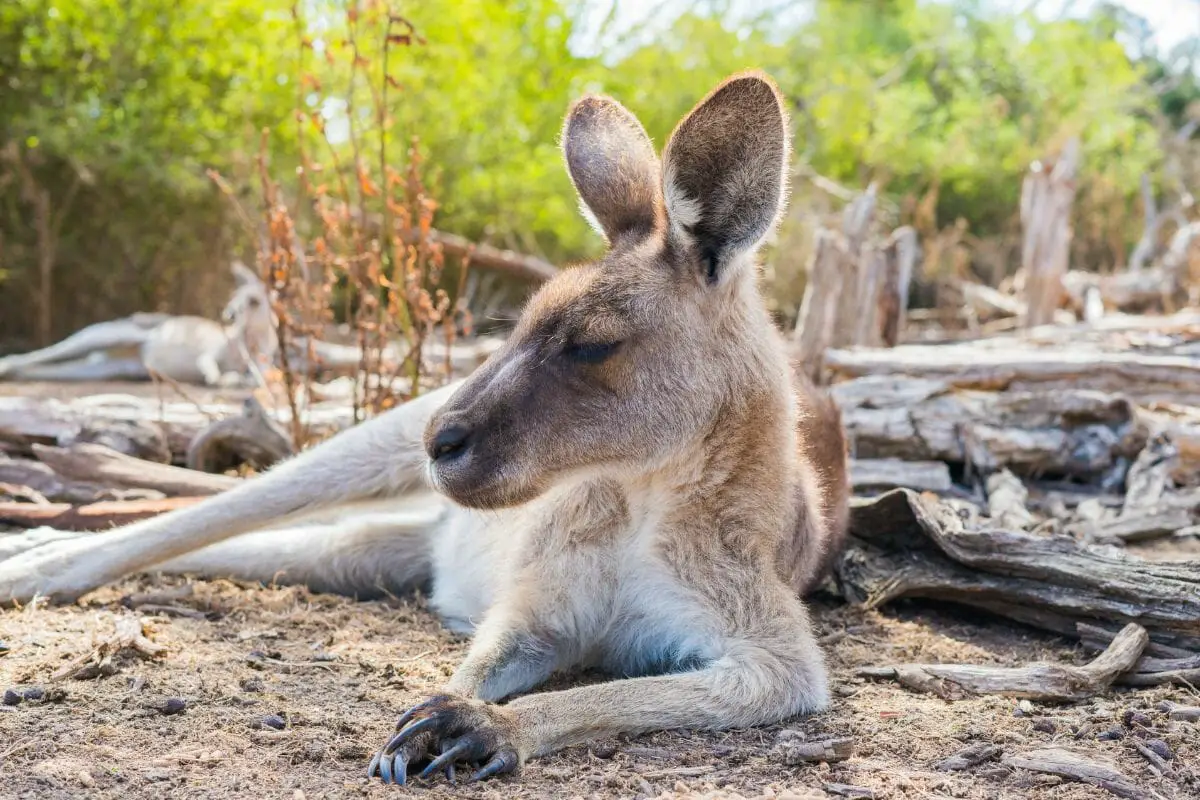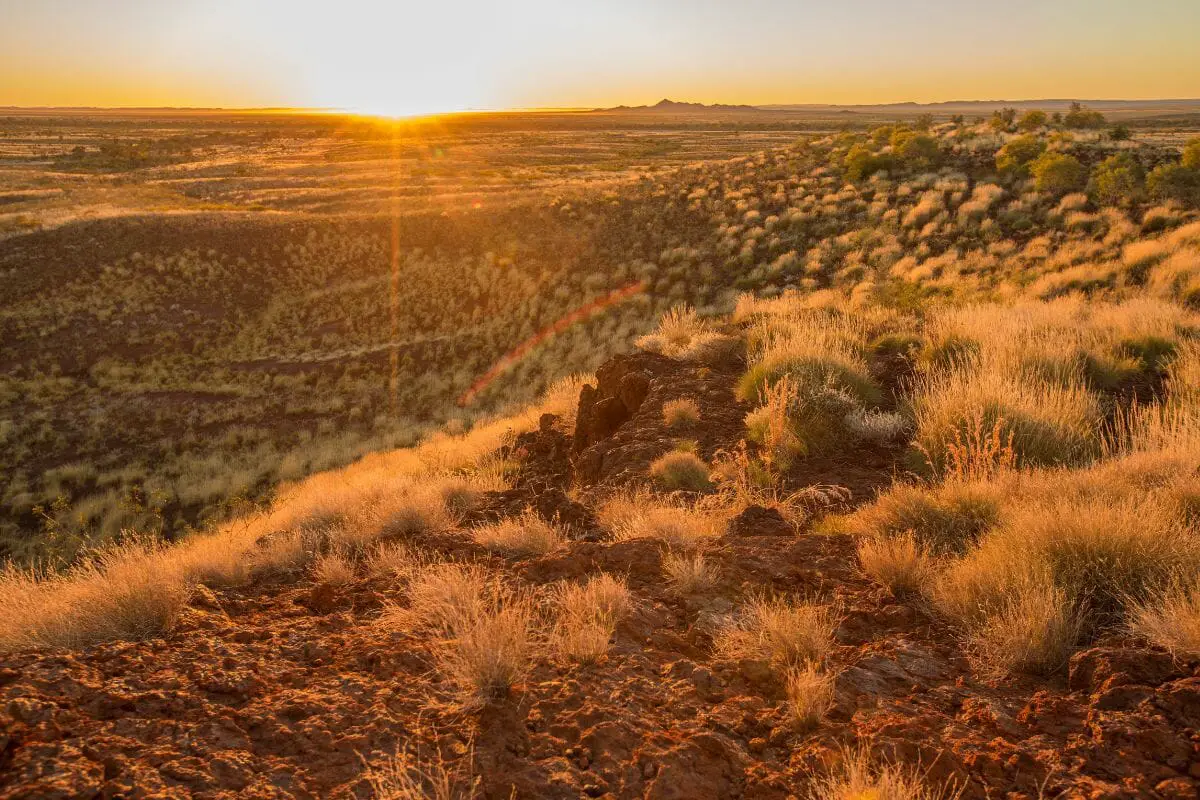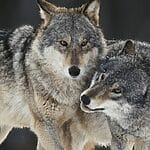Kangaroos, synonymous with the Australian outback, are often admired for their ability to thrive in scorching temperatures. But what happens when the mercury drops? Can these iconic marsupials withstand the cold, or do they falter in frigid conditions?
Many wonder how kangaroos, adapted to the intense heat, cope when faced with colder climates. This question becomes even more pressing considering the occasional snowfall in parts of Australia. Are they equipped to handle such extremes, or do they struggle?
In this article, we will explore the fascinating adaptations of kangaroos, shedding light on their strategies for surviving both the heat and the unexpected cold. By the end, you’ll understand why kangaroos can endure a range of temperatures, but also where their limits lie.

How Do Kangaroos Survive The Heat?
Kangaroos have evolved to behave in certain ways that prove beneficial for them in their native environment, and these consist of many different elements.
They have evolved to behave in this way, and have been doing so for thousands of years. What’s more, they also have adaptations that allow them to keep cool in these hot environments.
Daily Schedule
In their day to day lives, kangaroos live a near nocturnal lifestyle – hunting and frolicking around their habitats during the late evening and nighttime, but spending much of the day sleeping in shady areas away from the midday sun.
Panting
Like dogs, kangaroos also have the ability to pant as a means of staying cool. This works by allowing the kangaroos to rapidly inhale, humidify, and then exhale the air, increasing the evaporation of water from their noses and lungs.
Licking
Several species of kangaroos also lick their forearms to keep them cool – applying the saliva on the wrists to cool down their blood and keep them functioning.
In many ways, this is the same technique used by human beings wishing to stay cool – wherein they wet their wrists with cool water to cool the blood and bring down their core temperature momentarily.
Sweating
However, despite this fact, kangaroos do have the ability to sweat (see also: Animals That Sweat)- something that, unlike their canine counterparts, works in tandem with the panting to increase their heat tolerance.
They generally sweat during exertion, and this achieves the same practice as described above, albeit through the pores in the skin.
Can They Survive The Cold?
Like most creatures, kangaroos enjoy a moderate temperature that is suited to their needs and lifestyles. This is why, when things get too hot, they tend to sleep to conserve energy.
But surprisingly, kangaroos and similar creatures are also highly adapted to surviving in cold weather – even periods of snow and blizzards that would deter other animals from venturing into the cold.
Kangaroos and wallabies are two types of marsupials that are well adapted to a variety of temperatures, and if they have time to acclimatize to the temperature drops over the fall, then they can grow a sufficient winter coat that can keep them warm through the colder months.
However, they still have their limits, and are nowhere near as adapted to the cold weather as other kinds of animals born in colder climates.
How Can Kangaroos Keep Warm?
One major technique employed by kangaroos who get caught in these colder environments is to exert themselves more.
This means that they can extend the amount of time they would normally hop around, thus increasing blood flow through their bodies, and raising their temperatures.
They can also consume more food – something that can be difficult depending on levels of snowfall.
However, with sufficient fuel in their systems, they can keep going for longer, and keep their internal temperatures sustained.
Also, kangaroos native to the colder parts of the country are well adapted, using their thicker coats to keep them warm and safe, even in ample snowfall.
How Cold Can It Get In Australia?
While environmental anomalies do occur, the general lowest temperature for Australia tends to be between 37 and 51 degrees fahrenheit.
This is not considered too cold at all, and kangaroos are more than adapted to surviving at this temperature – due to the fact that they are used to the variations, having adapted over thousands of years.

However, when there was moderate snowfall in some regions of Australia in 2019, it was noted that kangaroo populations were not enjoying the snow as much as others, and there was highly popularized footage of mobs of kangaroos shivering in the cold conditions.
This suggests that, despite their versatility as a species, they do obviously still have specific ranges within which they function best.
Does Australia Have Snow?
Despite its reputation for being dry and extremely hot, Australia does experience a large variation in terms of weather and temperature – and in the highlands, the country does experience snowfall each year.
This tends to happen in southeast Australia in regions such as New South Wales, where snowfall can be a common event during the country’s winter months.
Despite being surprising, this snowfall can come as a result of cold snaps heading up from Antarctica (Also check out Animals That Live In Antarctica), bringing with it changes in pressure and sporadic snowfall.
Why Can’t They Withstand Extreme Cold?
Unfortunately for the kangaroo, the physiological factors that make it suited to the extreme heat of Australia, are the same things that make them not suited for, say, Siberia.
Not Enough Fat
Firstly, they have significantly less internal fat stores than animals designed for colder climates, which means that they wouldn’t be able to conserve energy and heat during extreme bouts of cold.
No Hibernation
They also do not have the ability to go into hibernation or torpor – a sleep-like state where an animal lowers its temperature and heart rate to survive and conserve energy.
This means that they cannot wait out the winter months and survive on their reserves of fat and the food they have consumed.
This would mean that, for a kangaroo in a freezing climate, they would be constantly exposed to the cold when they would be scavenging for food – the supplies of which would be extremely limited.
Limited Food
Also, kangaroos are grazing animals, meaning they continually consume plant material (and fungi) for most of their waking hours.
This means they would not survive well in a freezing cold environment, especially during winter months when supplies of grasses and shrubbery would be extremely limited, if not dead entirely.
So What Can They Survive?
Ultimately, the kangaroo is a versatile creature that uses its unique internal physiology to survive in a multitude of different temperatures and conditions.
However, everything has its limits, and while they can survive in the snowy regions to the southeast, and on the higher ground, they cannot survive in the kinds of winters experienced by more extreme countries.
The best way to perhaps sum up their adaptability, would be to say that they have a higher tolerance for extremes than most species on the planet – something that has been afforded to them by living on one of the most extreme countries on planet Earth.
FAQs
Can kangaroos survive in cold climates?
Kangaroos can survive in moderately cold climates, especially if they have time to acclimatize. They grow thicker winter coats and increase their activity to stay warm. However, they are not well-suited for extreme cold due to their lack of significant fat stores and inability to hibernate.
What temperature do kangaroos live in?
Kangaroos typically live in environments where temperatures range from 37 to 51 degrees Fahrenheit. They thrive in Australia’s varied climates, adapting well to both hot summers and mild winters, but struggle in regions with extreme cold.
How do kangaroos keep warm in the cold?
Kangaroos keep warm by increasing their physical activity, consuming more food, and growing thicker winter coats. These adaptations help them maintain body heat during colder months, although they still prefer milder climates.
Do kangaroos experience snowfall?
Yes, kangaroos in southeastern Australia experience occasional snowfall. They are generally able to cope with mild snow, but prolonged exposure to heavy snow and extreme cold can be challenging for them.
Final Thoughts
And there we have it, everything you need to know about kangaroos, and their tolerance of cold weather conditions.
Kangaroos are an incredibly versatile creature, capable of surviving even the hottest Australian summers with little problem. However, when it comes to the colder weather, they can only tolerate so much.
Luckily for them, this is seldom a problem in their native Australia, where temperatures soar, and their only concern is finding a shady spot to beat the midday heat.
- What Should I Do If A Koala Bites Me? Safety Guide - 2024-05-30
- Are Kangaroos Born Without Hind Legs? A Fascinating Journey - 2024-05-30
- Animals That Look Like Squirrels - 2024-05-30









